Abstract
This study was conducted to provide current information on the effectiveness of water treatment chemicals and filters for control of Giardia cysts in areas where treated water is not available. Four filters and seven chemical treatments were evaluated for both clear and turbid water at 10 degrees C. Three contact disinfection devices were also tested for cyst inactivation. Filters were tested with 1-liter volumes of water seeded with 3 x 10(4) cysts of G. lamblia produced in gerbils inoculated with in vitro cultured trophozoites; the entire volume of filtrate was examined for cyst passage. Chemical treatments were evaluated at concentrations specified by the manufacturer and for contact times that might be expected of hikers (30 minutes) and campers (eight hours, i.e., overnight). Two of the four filter devices tested were 100 percent effective for Giardia cyst removal. Of the other two filters, one was 90 percent effective and the other considerably less effective. Among the seven disinfection treatments, the iodine-based chemicals were all significantly more effective than the chlorine-based chemicals. None of the chemical treatments achieved 99.9 percent cyst inactivation with only 30-minute contact. After an eight-hour contact each of the iodine but none of the chlorine preparations achieved at least 99.9 percent cyst inactivation. None of the contact disinfection devices provided appreciable cyst inactivation. Heating water to at least 70 degrees C for 10 minutes was an acceptable alternative treatment.
Full text
PDF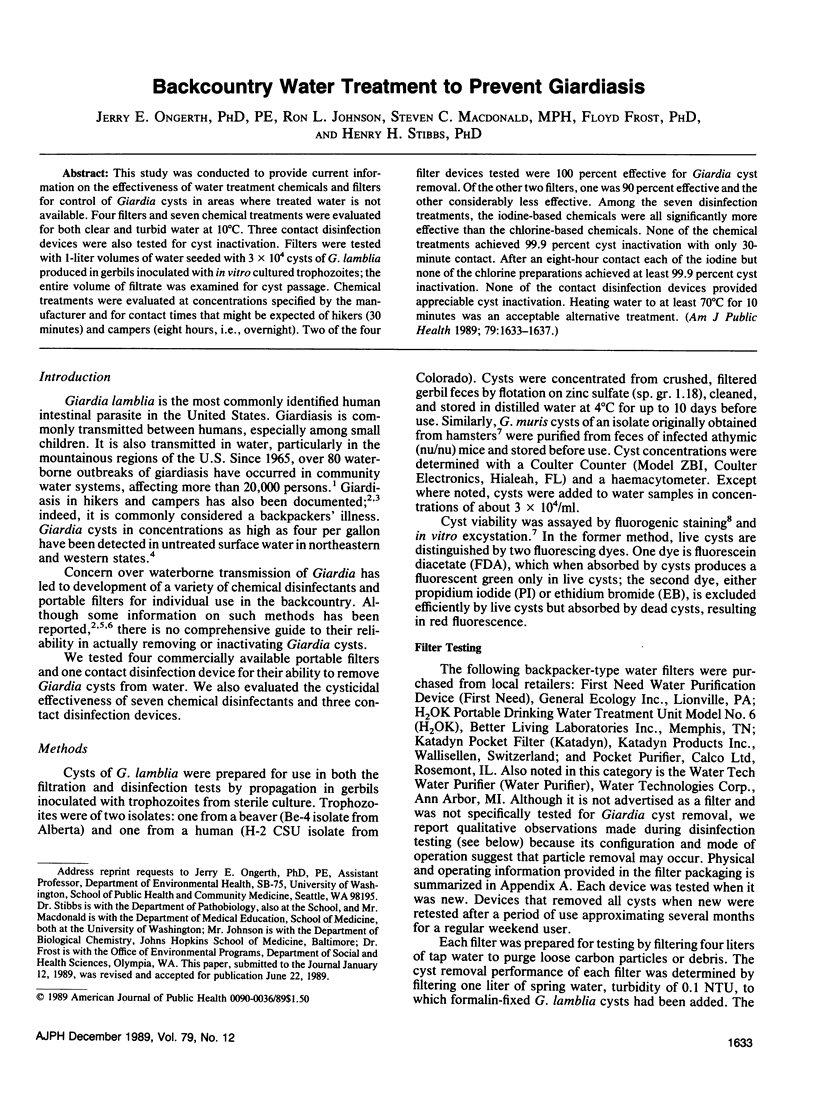
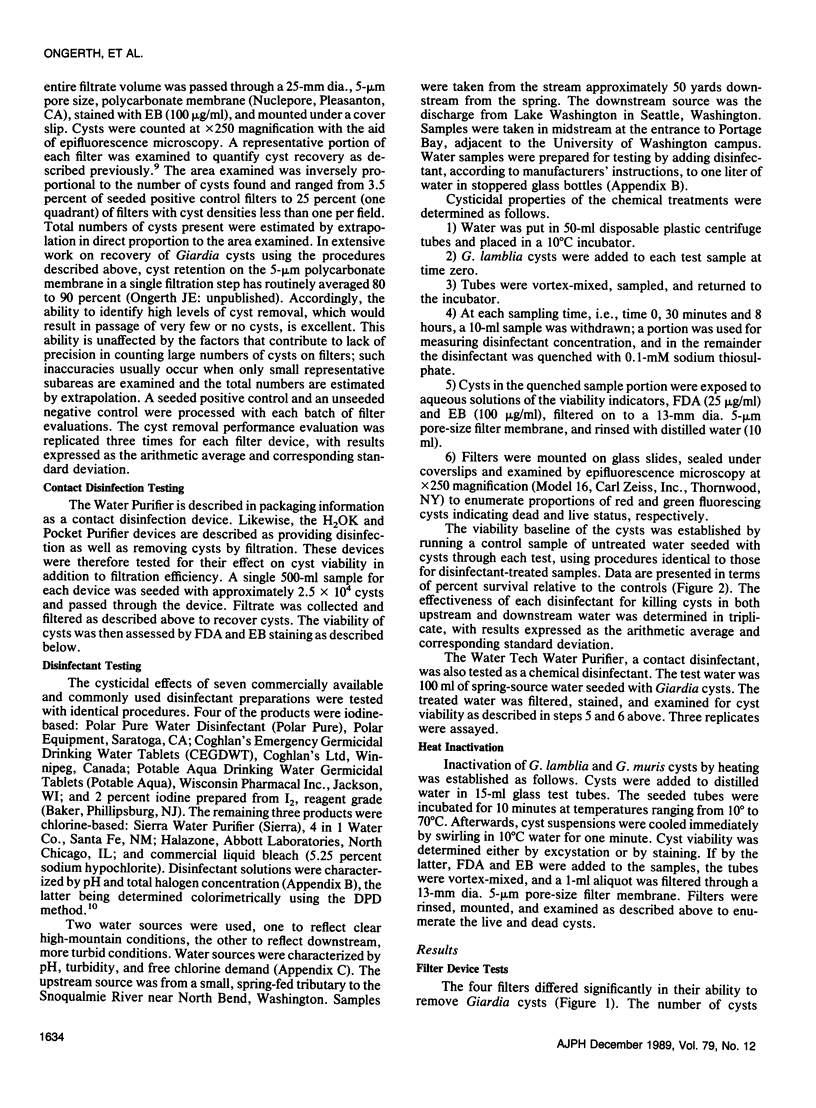
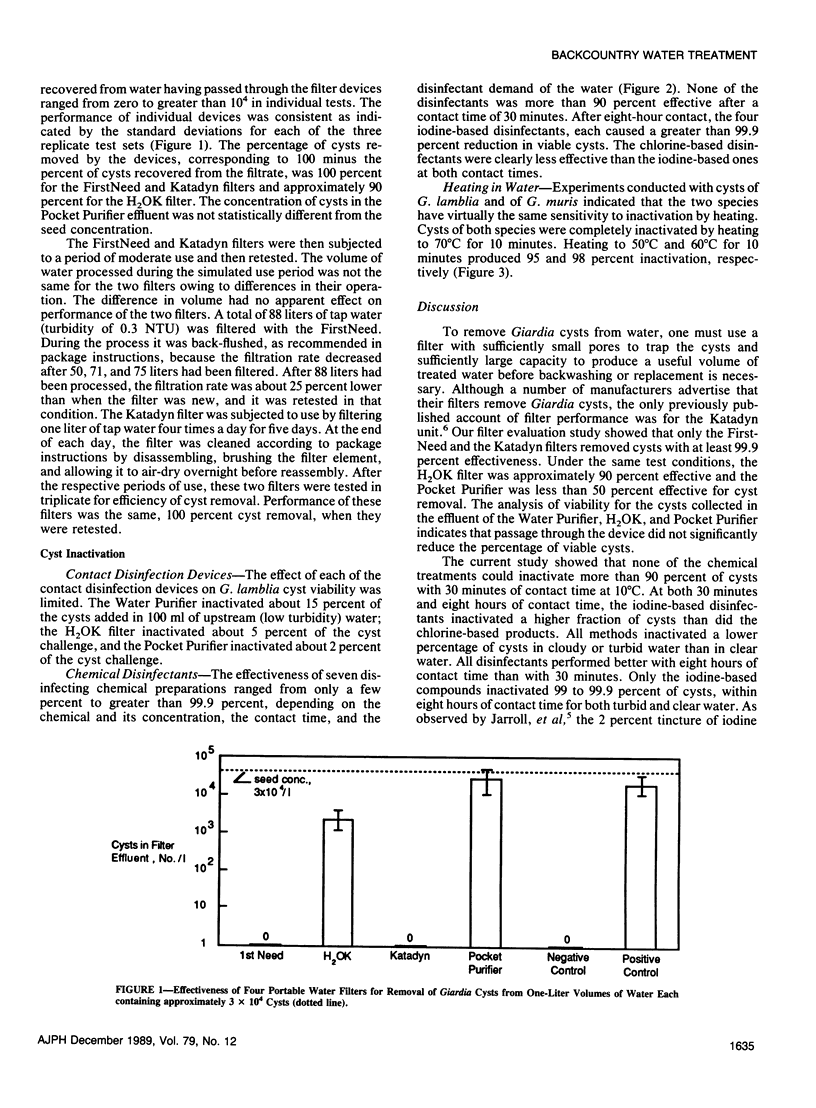
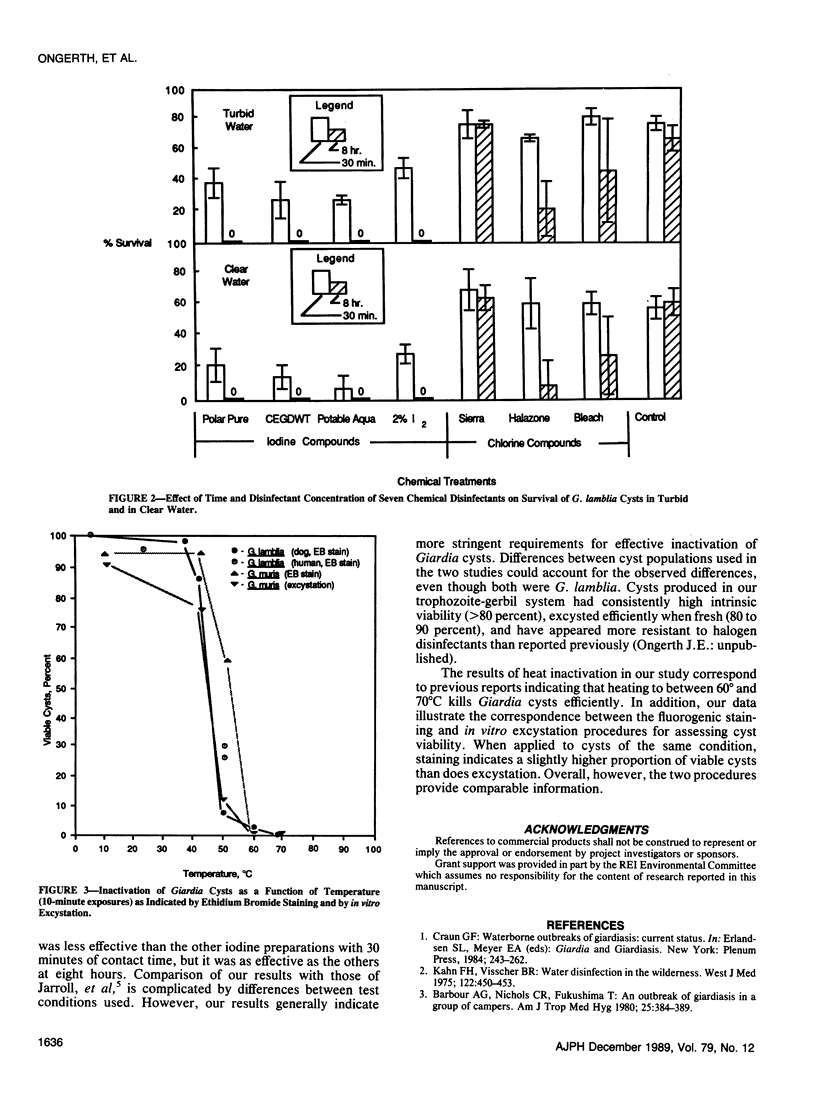
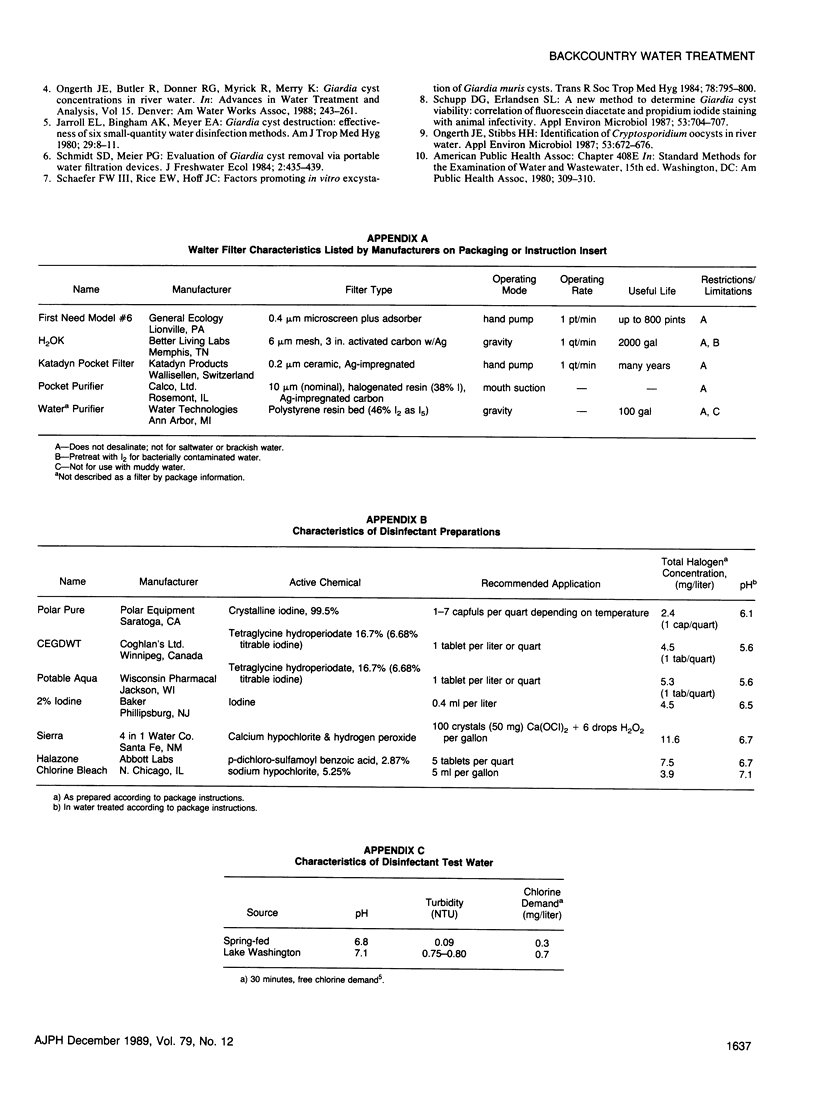
Selected References
These references are in PubMed. This may not be the complete list of references from this article.
- Barbour A. G., Nichols C. R., Fukushima T. An outbreak of giardiasis in a group of campers. Am J Trop Med Hyg. 1976 May;25(3):384–389. doi: 10.4269/ajtmh.1976.25.384. [DOI] [PubMed] [Google Scholar]
- Jarroll E. L., Jr, Bingham A. K., Meyer E. A. Giardia cyst destruction: effectiveness of six small-quantity water disinfection methods. Am J Trop Med Hyg. 1980 Jan;29(1):8–11. doi: 10.4269/ajtmh.1980.29.8. [DOI] [PubMed] [Google Scholar]
- Kahn F. H., Visscher B. R. Water disinfection in the wilderness--a simple, effective method of iodination. West J Med. 1975 May;122(5):450–453. [PMC free article] [PubMed] [Google Scholar]
- Ongerth J. E., Stibbs H. H. Identification of Cryptosporidium oocysts in river water. Appl Environ Microbiol. 1987 Apr;53(4):672–676. doi: 10.1128/aem.53.4.672-676.1987. [DOI] [PMC free article] [PubMed] [Google Scholar]
- Schaefer F. W., 3rd, Rice E. W., Hoff J. C. Factors promoting in vitro excystation of Giardia muris cysts. Trans R Soc Trop Med Hyg. 1984;78(6):795–800. doi: 10.1016/0035-9203(84)90024-5. [DOI] [PubMed] [Google Scholar]
- Schupp D. G., Erlandsen S. L. A new method to determine Giardia cyst viability: correlation of fluorescein diacetate and propidium iodide staining with animal infectivity. Appl Environ Microbiol. 1987 Apr;53(4):704–707. doi: 10.1128/aem.53.4.704-707.1987. [DOI] [PMC free article] [PubMed] [Google Scholar]


